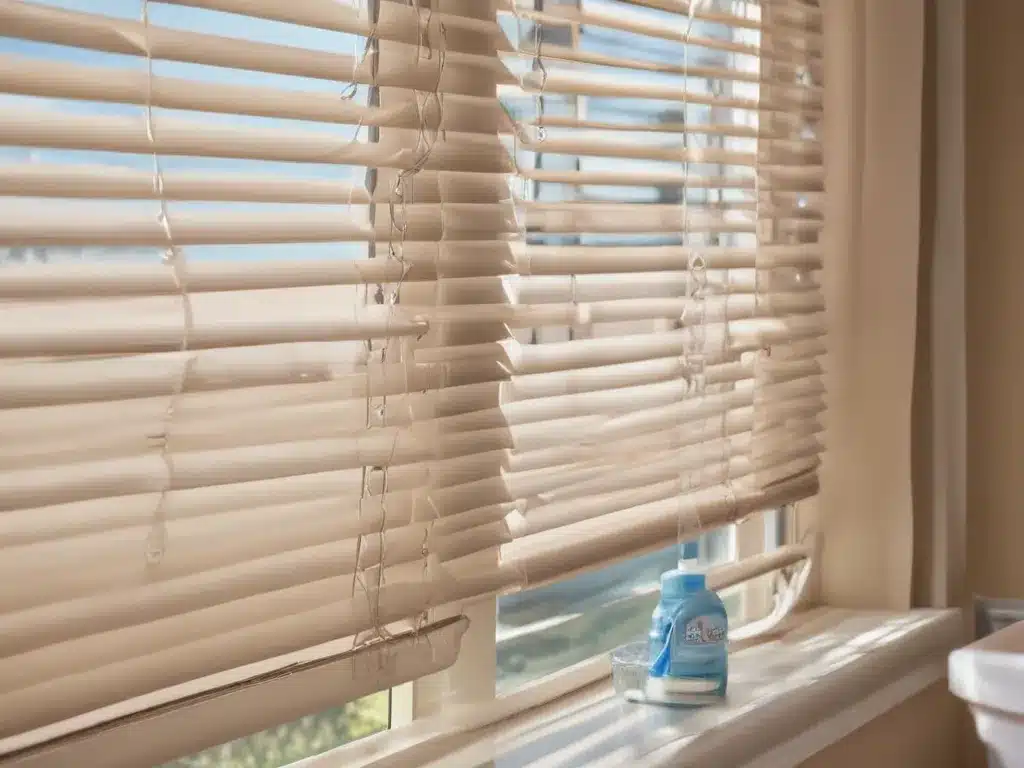Introduction
As a homeowner or business owner, maintaining the cleanliness of your blinds is crucial for creating a welcoming and inviting environment. Over time, blinds can accumulate dust, dirt, and grime, which can not only make them look unsightly but also contribute to poor indoor air quality. Fortunately, there’s a simple and cost-effective solution that you can use to clean your blinds: fabric softener and water.
What is Fabric Softener?
Fabric softener is a liquid or sheet product that is commonly used in laundry to soften fabrics and reduce static cling. It works by coating the fibers of the fabric with a thin layer of lubricant, which makes the material feel softer and smoother. Fabric softener also has other beneficial properties, such as reducing wrinkles and adding a pleasant fragrance to clothes.
Why Use Fabric Softener to Clean Blinds?
You might be wondering why fabric softener is an effective cleaning agent for blinds. The key lies in its ability to cut through grease and grime while leaving a protective coating that repels dust and dirt. Here are some reasons why fabric softener is an excellent choice for cleaning blinds:
-
Effective Cleaning Power: Fabric softener contains surfactants, which are compounds that help to break down and remove dirt, grease, and other stubborn stains from surfaces.
-
Gentle on Blinds: Unlike harsh chemical cleaners, fabric softener is gentle on blinds, especially those made of delicate fabrics or materials. It won’t cause fading, discoloration, or damage to the blinds.
-
Anti-Static Properties: Fabric softener helps to reduce static cling, which can cause dust and dirt to adhere to blinds more easily. By reducing static, your blinds will stay cleaner for longer.
-
Leaves a Protective Coating: After cleaning, fabric softener leaves a thin, protective coating on the surface of the blinds, which helps to repel future dirt and dust buildup.
-
Pleasant Fragrance: Many fabric softeners have a pleasant, fresh scent that can leave your blinds smelling clean and inviting.
How to Clean Blinds with Fabric Softener and Water
Now that you understand the benefits of using fabric softener to clean blinds, let’s dive into the step-by-step process.
Materials Needed:
- Fabric softener (liquid or sheet)
- Water
- Bucket or spray bottle
- Soft cloths or microfiber towels
- Vacuum cleaner with brush attachment (optional)
Step 1: Prepare the Cleaning Solution
If you’re using liquid fabric softener, mix equal parts of fabric softener and water in a bucket. For example, if you’re using 1 cup of fabric softener, add 1 cup of water. If you’re using fabric softener sheets, simply add a few sheets to the bucket and fill it with water.
Step 2: Vacuum the Blinds (Optional)
Before cleaning, it’s a good idea to vacuum the blinds to remove any loose dirt, dust, or debris. Use the brush attachment on your vacuum cleaner and gently run it over the surface of the blinds.
Step 3: Clean the Blinds
Dip a soft cloth or microfiber towel into the fabric softener and water solution, and wring it out so that it’s damp but not dripping wet. Gently wipe the cloth over the surface of the blinds, paying extra attention to any areas with visible dirt or stains.
If you’re cleaning horizontal blinds, start at the top and work your way down, moving the slats as you go. For vertical blinds, start at one end and work your way across.
Step 4: Rinse and Dry
Once you’ve cleaned all the blinds, rinse them with clean water to remove any residue from the fabric softener solution. You can use a spray bottle filled with clean water for this step.
Finally, use a dry, clean cloth or microfiber towel to gently dry the blinds. Be sure to open the blinds fully to allow for proper air circulation and drying.
Tips and Tricks
-
Test a Small Area First: Before cleaning the entire set of blinds, test the fabric softener and water solution on a small, inconspicuous area to ensure it doesn’t cause any discoloration or damage.
-
Use the Right Type of Fabric Softener: Choose a fabric softener that is suitable for the type of blinds you have. For example, if you have wooden blinds, opt for a fabric softener that is safe for use on wood surfaces.
-
Adjust the Solution Strength: If you’re dealing with particularly stubborn stains or dirt, you can increase the ratio of fabric softener to water in the solution for added cleaning power.
-
Clean Regularly: To maintain the cleanliness of your blinds, make it a habit to clean them regularly, even if they don’t appear dirty. Dust and dirt can accumulate quickly, especially in high-traffic areas or homes with pets.
-
Consider Professional Cleaning: For heavily soiled or neglected blinds, it may be worth considering professional cleaning services. Professional cleaners have access to specialized equipment and cleaning solutions that can effectively restore the appearance of your blinds.
Conclusion
Cleaning blinds with fabric softener and water is a simple, affordable, and effective method that can help keep your blinds looking their best. Not only does it remove dirt and grime, but it also leaves a protective coating that repels future buildup, reducing the frequency of cleaning. By following the steps outlined in this article, you can easily maintain the cleanliness of your blinds and create a fresh, inviting atmosphere in your home or business. If you’re in need of professional cleaning services, consider checking out AdamCleaning.uk, a reputable company offering high-quality cleaning solutions for both residential and commercial clients.







